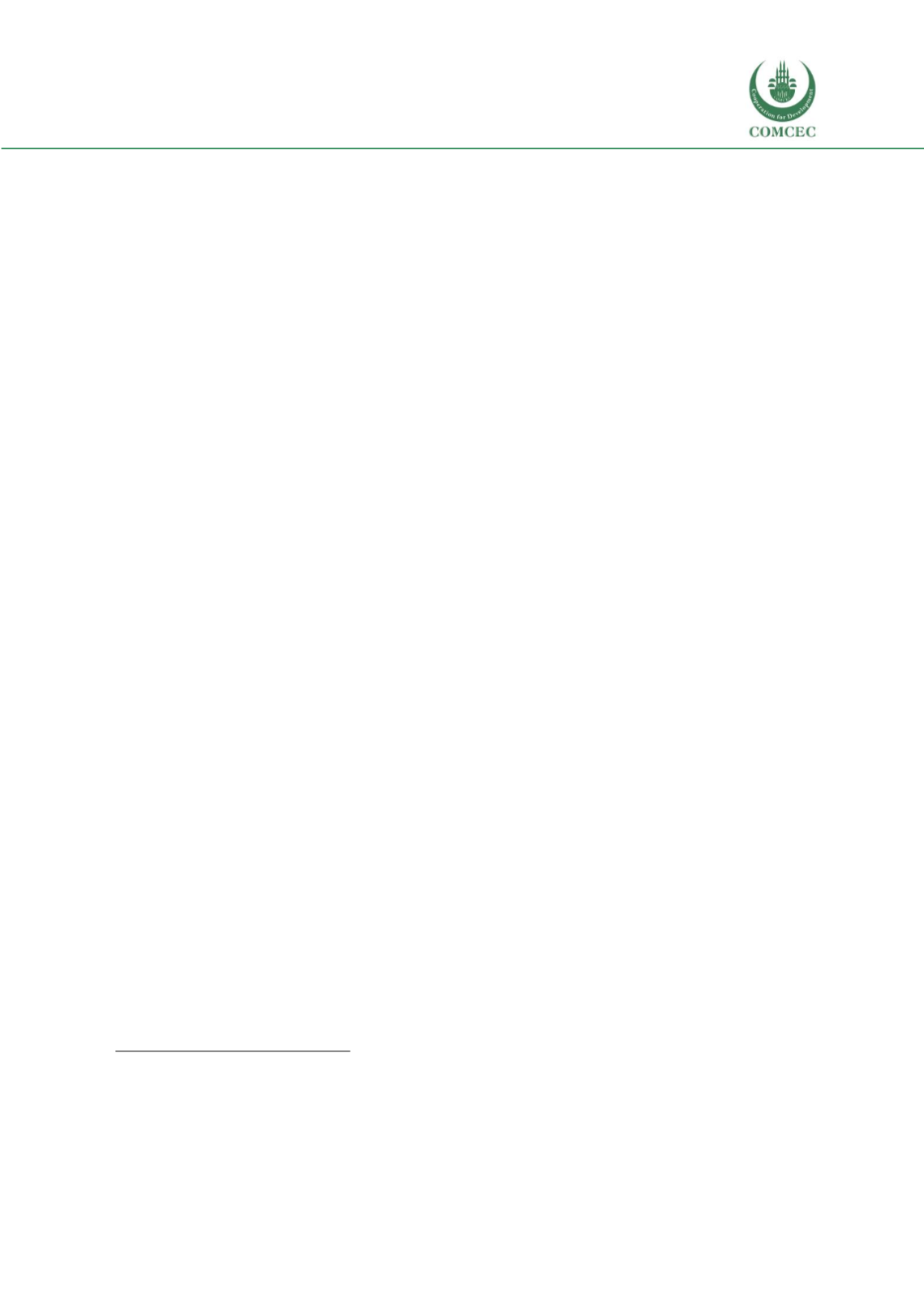

Education of Disadvantaged Children in OIC:
The Key to Escape from Poverty
81
and availability of school materials (only 17% of infrastructure availability and low availability of
school materials at 2.55 textbooks per child). In response, the new policies (see section 4) are
being put in place to strengthen monitoring of results and performance-based management.
Curriculum:
Another main supply-side challenge pertains to the national curriculum. The
education situation analysis
234
that formed the basis of the new education policies from 2013
onwards found that programs and learning methods are outdated, especially at junior secondary
level. The outdated curriculum led to poor quality of teaching, high repetition and drop-out rates,
poor learning and irrelevance of skills for future employability, which in turns affects demand for
school.
Administrative barriers:
According to the 2013 census, the proportion of children "out of
school" among children without a birth certificate is on average 77%, compared to 39% among
those who have a birth certificate. This is a significant barrier to access to education as children
without a birth certificate cannot enrol for the official end of cycle exams (end of primary, end of
lower secondary, end of secondary). They cannot complete the primary cycle and thus cannot
enrol in the secondary cycle.
Quantity and quality of school supply:
In recent years, a combination of shortage of teachers
and low budgets for infrastructure led to many schools closing or being taught in multi-grade
format. The transition rate from primary to junior secondary increased from 50.2 percent in 2005
to 88.4 percent in 2011
235
, the year in which Senegal implemented a compulsory ten-year basic
education system. However, the increased transition rate was not accompanied by a parallel
increase in the number of secondary level facilities, which has led to overcrowded junior
secondary schools in urban areas and schools using shelters in rural areas. About 40 percent of
junior secondary schools
236
were held in shelters with huge disparities between regions and these
poor learning conditions affect negatively the quality of education. As of 2016, 9% of classrooms
are reported to be shelters with an objective to replace all shelters with classrooms by 2021.
237
Disability:
In spite of the existence of an Inclusive Education strategy at the government level, in
practice there is still very little support for children with disabilities. Schools’ infrastructures are
not adapted to children with disabilities. Teachers, most of whom have not received any training
in inclusive education, care little about the participation or understanding of these students with
specific needs. The absence of personalized remedies in the schools and support for learning
difficulties means disabled children are more likely to drop out of school. This situation leads to
many parents never enrolling their disabled children in the first place.
Language of instruction:
The variation between the language of instruction in school and the
language spoken at home affects the performance of children and therefore attendance and
completion rates as well. The PASEC 2014 study found a significantly higher proportion of
234
MEN (2013)
235
Rapport des indicateurs rétropolés (2002 à 2015) DPRE/MEN (obtained from the Ministry of National Education)
236
WB 2012
237
Information is obtained from the Ministry of National Education
















